Get to Know Bob Stefko
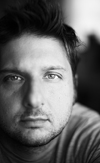 We recently had the opportunity to interview the talented photographer, Bob Stefko. Relatively new to Gango Editions, Stefko’s outstanding images are a treasured addition to our catalog.
We recently had the opportunity to interview the talented photographer, Bob Stefko. Relatively new to Gango Editions, Stefko’s outstanding images are a treasured addition to our catalog.
Q. What do you see as the central appeal to your artwork?
A. Much of my work as a photographer certainly has been focused on finding the beauty in both unique and mundane places and situations. As a working editorial photographer for more than a decade I’m challenged every day to make the best of situations and bring back compelling and marketable images. I believe that I carry this philosophy into my fine art work. I simply try to bring out the best in any situation, which I believe is also what attracts others who appreciate what I do.
Q. How did you get on the path to becoming a professional artist?
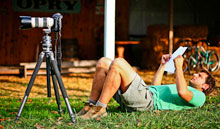 A. I’ve been a professional photographer for about 13 years now. I grew up in a working class family without any big ideas of having a career in the arts. However, my father loved cameras and in retrospect, I think the photo bug hit me as early as age 7 or 8 while watching him take pictures as a hobby. I simply fell in love with photography and knew it was something I’d do one way or another. I spent about 5 years doing odd jobs after school before deciding I’d only be happy as a full time photographer. The fact that I was broke when I made that decision only made my drive to be successful stronger. I got here one day at a time, working long hours and always trying my best.
A. I’ve been a professional photographer for about 13 years now. I grew up in a working class family without any big ideas of having a career in the arts. However, my father loved cameras and in retrospect, I think the photo bug hit me as early as age 7 or 8 while watching him take pictures as a hobby. I simply fell in love with photography and knew it was something I’d do one way or another. I spent about 5 years doing odd jobs after school before deciding I’d only be happy as a full time photographer. The fact that I was broke when I made that decision only made my drive to be successful stronger. I got here one day at a time, working long hours and always trying my best.
Q. Sometimes art can be a passion and sometimes it can be a labor. In what ways does this statement resonate with you?
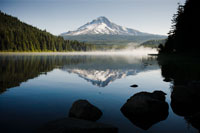 A. I’m often surprised by new images, even now that the days of film are long gone and we can look at images on the backs of our cameras a second after pressing the shutter. It’s still exciting, surprising or sometimes disappointing to see what you have just made. I think many of my favorite images have been ones that have required the most work and planning to get right. That can mean being in the right place at the right time, going back to a location again and again or any number of time intensive elements. The other thing that is often lost on people is the amount of time one spends alone in this career, be it traveling to or from some place, sitting at a computer at all hours of the morning or night, or being freezing wet behind a camera in the field.
A. I’m often surprised by new images, even now that the days of film are long gone and we can look at images on the backs of our cameras a second after pressing the shutter. It’s still exciting, surprising or sometimes disappointing to see what you have just made. I think many of my favorite images have been ones that have required the most work and planning to get right. That can mean being in the right place at the right time, going back to a location again and again or any number of time intensive elements. The other thing that is often lost on people is the amount of time one spends alone in this career, be it traveling to or from some place, sitting at a computer at all hours of the morning or night, or being freezing wet behind a camera in the field.
Q. How do you keep your creativity flowing? Do you have days when it all goes blank? How do you inspire yourself to create? For those of us who lack an artistic talent, can you explain how you bring your skill, inspiration, and work together?
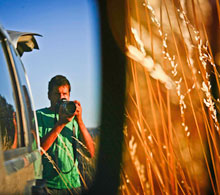 A. I try to be creative with everything I do, not just photography. Certainly it’s tougher some days than others and there is a lot of disappointment in both editorial and fine art work. I try to always go back to the things that brought me into this world to start with, like my love of the simple beautiful image and the idea of being able to find things that other people can’t see. On the best days it’s the ability, after years of doing this, to somehow transcend the technical aspects of photography and really just let the creative side be in the moment. It’s great to have the ability to instinctually understand the light and the moment, and to have the correct lens on the camera for the right composition. It’s so easy to get bogged down in techniques and numbers in photography. All the time in my day to day work, I’m approached by people who see me working on either a magazine project or a personal project and want to talk about the newest camera or lens or what not. Not only do I generally not own this thing they want to talk about, but they often know more about it than I do. Sadly, what I’m asked much less about is what I’m really doing, or what I might be seeing or trying to capture.
A. I try to be creative with everything I do, not just photography. Certainly it’s tougher some days than others and there is a lot of disappointment in both editorial and fine art work. I try to always go back to the things that brought me into this world to start with, like my love of the simple beautiful image and the idea of being able to find things that other people can’t see. On the best days it’s the ability, after years of doing this, to somehow transcend the technical aspects of photography and really just let the creative side be in the moment. It’s great to have the ability to instinctually understand the light and the moment, and to have the correct lens on the camera for the right composition. It’s so easy to get bogged down in techniques and numbers in photography. All the time in my day to day work, I’m approached by people who see me working on either a magazine project or a personal project and want to talk about the newest camera or lens or what not. Not only do I generally not own this thing they want to talk about, but they often know more about it than I do. Sadly, what I’m asked much less about is what I’m really doing, or what I might be seeing or trying to capture.
Q. What are you working on now? What are your plans for the upcoming year?
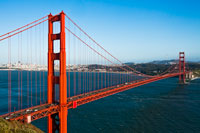 A. As I write this I’m very busy shooting editorial work for a number of magazine clients so I don’t have time now for personal work. This last winter, however, I spent almost two months living out of my small truck traveling and camping throughout the southern and western United States. I often take extended trips during the winter months since that’s a slower time for my magazine work. I’m planning a few weeks of shooting this autumn on the Atlantic coast and then a few weeks later this year on the west coast to cover areas my archive is light on. Early next year I’ll be returning to Alaska for two weeks of shooting to capture the northern lights. With the current economy I don’t travel as much to faraway places for magazine clients as I once did. Much of my best travel is now self-financed. That being the case, I have to shoot more in North America than I would have five or ten years ago. This country has so much to offer, however, that it’s always a pleasure to shoot and work here. These days one of my new side projects is making large scale digital panoramics.
A. As I write this I’m very busy shooting editorial work for a number of magazine clients so I don’t have time now for personal work. This last winter, however, I spent almost two months living out of my small truck traveling and camping throughout the southern and western United States. I often take extended trips during the winter months since that’s a slower time for my magazine work. I’m planning a few weeks of shooting this autumn on the Atlantic coast and then a few weeks later this year on the west coast to cover areas my archive is light on. Early next year I’ll be returning to Alaska for two weeks of shooting to capture the northern lights. With the current economy I don’t travel as much to faraway places for magazine clients as I once did. Much of my best travel is now self-financed. That being the case, I have to shoot more in North America than I would have five or ten years ago. This country has so much to offer, however, that it’s always a pleasure to shoot and work here. These days one of my new side projects is making large scale digital panoramics.
Q. Do you have a favorite time of year to work on your art? What’s your next step?
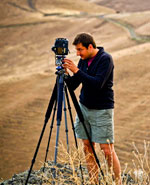 A. My favorite time to photograph is the autumn for both the color and cooler weather. My next step is to try to keep surviving in this tricky economy and to produce the best work that I can.
A. My favorite time to photograph is the autumn for both the color and cooler weather. My next step is to try to keep surviving in this tricky economy and to produce the best work that I can.
My job is certainly different every day; one day I’m photographing one of the biggest CEOs in the country and the next I’m photographing a garden or some small town in Middle America. No matter where I may be or what I’m photographing, I’m just glad to be doing the thing I love.
See all of Bob Stefko’s photos available through Gango Editions .